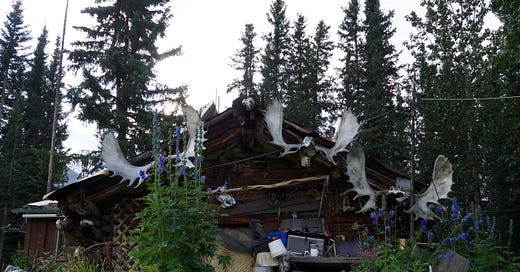Keys to Freeze, Mile 7719: Life in a Town Where the Sun Don’t Shine
Just off the northernmost road in the United States there’s a village of fourteen hearty souls who live off the land, preparing for a frighteningly frigid winter and darkness that lasts all day.
Photos by Meredith Meeks
We are but two hundred miles from our original 8,000-mile goal of Deadhorse, Alaska — the northernmost point reachable by road in the United States, and a town that seemed a world away when the Keys to Freeze crew first pedaled in South Florida. Since riding through Fairbanks, Alaska a week ago we’ve been moving strictly north along the Dalton Highway, the oil haul stretch immortalized by the reality TV show “Ice Road Truckers.” A 414-mile, partly paved, though mostly gravel road, the highway came into existence in 1974 to aid in the construction and maintenance of the Alaskan Pipeline. It is our final highway, the only road leading to our destination city, and the Arctic Ocean.
But in the foothills of the Brooks Mountain range off the Dalton Highway, there rests a tiny community called Wiseman, a village of only fourteen that existed well before oil was discovered just to the north of it. To live in Wiseman is to commit to a lifestyle damned by modern society. …
Keep reading with a 7-day free trial
Subscribe to Narratively to keep reading this post and get 7 days of free access to the full post archives.





